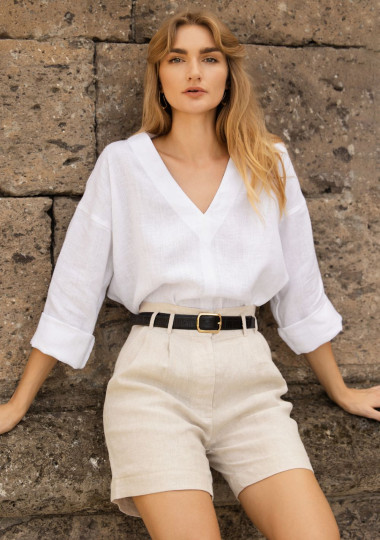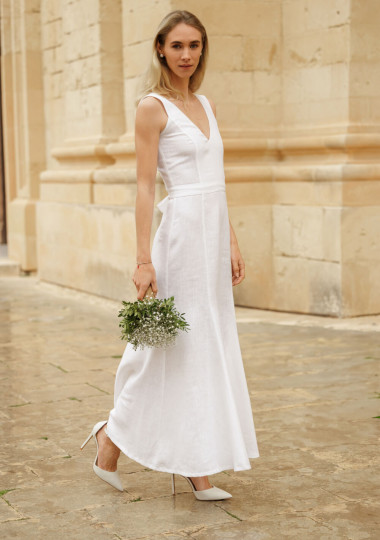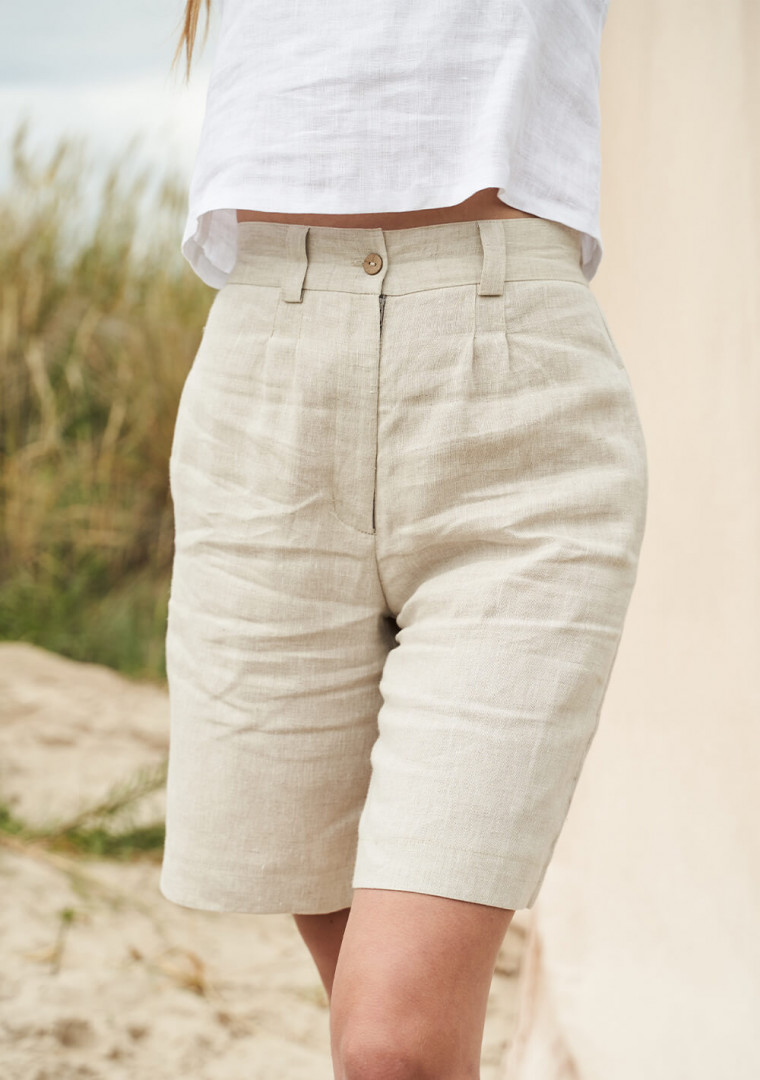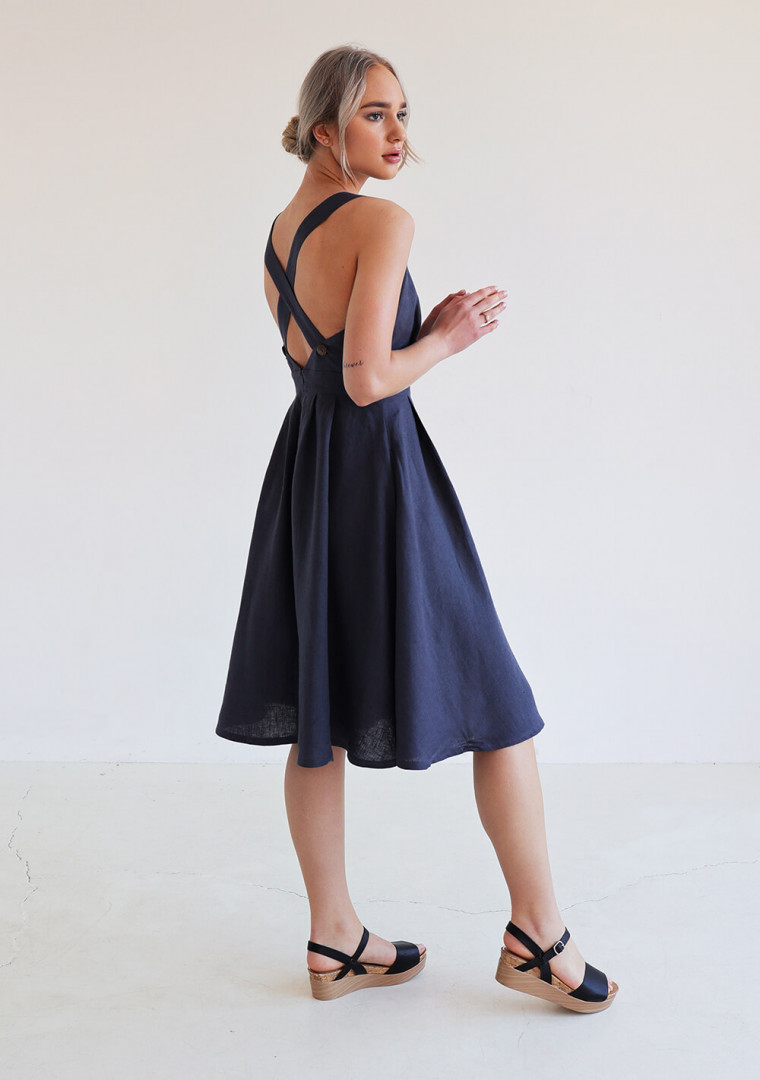How to Tell Quality Linen VS Cheap Linen?
Linen is appreciated for centuries and has a long, beautiful history and traditions. We often talk about high-quality linen clothes and how they can last a lifetime even when worn well and often. However, it is also important to know what aspects to look for when differentiating truly premium quality linen from cheap linen. This blog post will answer the most common questions regarding linen’s quality and work as your guide to discovering high-quality linen clothes worth investing in.
How is linen made?
Linen is a natural fabric derived from flax fibers. After acquiring fibers from the flax plant, it takes at least 100 days for the flax plant to be produced into linen fabric. When the flowers bloom and seeds mature, it is a sign the fibers are suitable for production. When fibers are removed from the stalk and processed, it is made into linen yarn from where endless piles of linen textile can be made.
Possible uses of linen
Linen is known as the most durable natural fabric and can be used in thousands of ways. It is a cost-effective plant since each, and every part of the flax plant can be used to create a worthwhile product. From seeds to oils and home linen items. Due to linen’s moisture-wicking and antibacterial qualities, it is an ideal material for household items such as tablecloths, upholstery, soft furnishings, and bedding. It is also used for making many types of linen clothing and for making a strong sewing thread. The hypoallergenic fabric helps ease common skin sensitivities and works wonders for people struggling with allergies or skin diseases. Linen is extremely popular now that more and more people are incorporating natural, sustainable materials into their wardrobes.
Linen properties
Linen characteristics are easily recognizable because of the fabric’s crispy texture and unique appearance. It looks a little sturdy due to its thick fibers but it smoothes and softens with each wear. Fabric is extremely breathable – although linen has a thicker weave, it allows air to flow between the fibers, so air and water can circulate easily providing you with a highly appreciated cooling effect during hot weather. High-quality softened linen fabric does not feel rigid or stiff on the skin – due to the unique softening process, linen feels soft and smooth. The easiest way to identify whether your linen is truly 100 % linen and made in high quality is to pay attention to these factors: weight, color, the strength of the fibers, wrinkles, slubs, and lastly, moisture-wicking qualities.
How to check the quality of linen?
The weight of the fabric may vary from lightweight linen 90-130 gsm, medium-weight linen: 140-190 gsm, and heavy-weight linen: 200-300 gsm. If you purchased medium-weight linen and it feels much thinner than expected density, chances are your fabric is not 100 percent linen.
Wrinkles are a natural tendency for quality linen and one of the key factors when identifying linen vs cheap linen or linen blend. If the fabric you have does not wrinkle or crease easily, it may be mixed with other fabrics or not linen at all. Embrace wrinkles everywhere – in your linen clothing and even in your linen bedding, ensuring you experience the true essence of high-quality, authentic linen..
Slubs or weaving errors. Linen clothes for women may sometime have small knots called slubs around the fabric. Although this natural tendency of linen used to be considered a defect, now the textile industry recognizes this unique feature as one of linen’s perfect imperfections. Slubs may even be intentionally weaved into the fabric to give it a vintage feel and handmade look.
Color properties. Linen clothes made in high-quality fabrics have even and smooth colors. If the fabric comes colored, it has to have a rich, vivid color with no signs of discoloration or fading at any part of the item. Natural linen color may vary depending on the season, soil, and other factors.
Strength is one of the greatest qualities of linen and may help identifying quality linen vs cheap linen. Thick natural fibers of quality linen can withstand frequent wash and use. If your linen item shows signs of color fading, decrease in quality, or damaged fabric a few times into use, chances are it is not 100 percent high-quality linen.
Thermal properties. Linen is a temperature-regulating fabric able to cool you down during hot summer days and keep you warm during colder weather. If you notice excess sweating, and a damp feel on your skin when wearing linen, it may not be high-quality fabric.
Moisture-wicking. Fabric can absorb up to 40 percent of its weight before feeling damp. Its moisture-wicking properties take sweat and moisture away to cool your body down and provide breathable wear. This unique property may also tell quality linen and cheap linen apart.
Not electrifying. Linen clothing does not accumulate static electricity – even a smaller addition of flax fibers is enough to eliminate the static electricity effect. That’s another aspect that may help identify if the linen item you own is made in high-quality natural linen fabric.
Is the country of origin important?
You may have already heard that European linen is among the greatest and worth investing in. Europeans do have long-lasting linen traditions of growing and appreciating linen. Because of a naturally damp ocean climate, flax’s low thermal density, and rich soil, European linen cultivation cannot be relocated or replicated. In Lithuania, the flax plant that the linen is made from is produced in a damp ocean climate with rich soil. The exclusive conditions of the climate produce long and strong fibers in the flax, which allow the plant to reach up to three feet high.
Why Lithuanian linen is worth investment?
Knowledge/experience. Lithuanians have been producing linen as early as the 2nd century and have been trading their work since the 16th century, so there’s no surprise how they have perfected the art of linen production. Surprisingly, the flax grown in Lithuania is three times taller than most other countries and therefore much stronger.
Lithuania has an ideal climate and soil for growing linen. Incredible flax quality can be associated with the unique climate conditions in Lithuania, the mineral-rich silty soil, and of course, the farmer's expertise. Flax plants grown in Lithuania are known for extra-long fibers — much longer than those grown in other parts of the world.
Traditions. It was very common for grandmothers to pass their clothing and home textile to their daughters or granddaughters. Linen was considered a sign of purity and a luxurious, sentimental item to pass for future generations. Lithuanians even have Gods for flax harvest which perfectly portrays linen’s importance in Lithuanian culture.

































